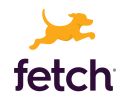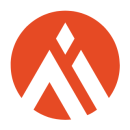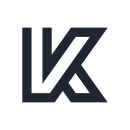
Many technology startups have offered generous work-from-home policies since their inception, but the novel coronavirus has moved entire workforces to full-time remote positions.
This shift has revealed expected and unexpected challenges — technology issues, feelings of loneliness and noisy children or roommates, to name a few — yet Chicago leaders say what can feel like over-communication has a significant impact in keeping remote workforces engaged and productive.
Companies across The Windy City have enacted weekly all-hands meetings to transparently share updates. Impromptu Zoom or Google Hangout conferences have replaced walking over to someone’s desk or sending a Slack message. Collaborating via project management tools like Airtable, Miro and various Google Drive suites have helped keep productivity high.
Ensuring that team members are in good spirits during these challenging times is just as important as keeping a business operating smoothly. That’s why many companies implemented randomized chats between employees across teams to foster a sense of camaraderie. New Slack channels and virtual happy hours were initiated to highlight topics like “Tiger King,” provide coding lessons, and share recipes and funny quarantine stories.
One of the most significant ways leaders ensure the well-being of their teams? Asking each individual — simply and directly — how they are doing and how leaders can help.
Most impactful change: “We established 4Degrees on the principle of a 100 percent co-located team to allow for real-time collaboration and quick iteration,” Vandegrift, co-founder and CTO of 4Degrees, said. “The shift to 100 percent remote work has been a challenge for us, particularly given that we had no existing remote work policy.
“To compensate, we made two major shifts. First, we added more processes to our standard workflows to ensure the required communication and visibility were still happening. Then, we all made a conscious effort to set up times to actually talk, rather than relying on Slack and ad-hoc communication to get the job done. We added an additional weekly, team-wide meeting to our schedules. So team members went from averaging maybe one call a day to three or more.”
Remote engagement tools: “We’ve always used Airtable as our technical task management system, but we’re leaning on it even more these days. We added a new layer of high-level project tracking in addition to our previous Airtable setup. We’re experimenting with real-time collaboration software. For instance, last week during one of our team-wide calls, we all hopped on an online whiteboarding tool so we could write out our reflections from the previous week.”
How 4Degrees supports employees: “I’ve tried to bring a degree of humanity to the situation. I’ve made it clear that we’re not expecting regular levels of productivity in the near-term. I reach out to every team member on essentially a daily basis to have candid conversations about how they’re doing, as well as how we can mold our work environment to be as supportive as possible. We try to be transparent about the state of the company and the changes we’re seeing from customers and other stakeholders.
“Finally, we’ve tried to shift some of our company’s attention to how we can help society given everything that’s happening. We’re working through potential strategic shifts so we can serve those who need help, like jobseekers. We also included a bonus in everyone’s last paycheck to be used at local businesses and restaurants.”
Most impactful change: “Our CEO provides a weekly, video town hall with updates for the entire company,” Banerjee, CTO of Fetch, said. “We transparently seek engagement from all employees at the end of these meetings by creating topic-specific chat channels for input. There are personal-focused channels for topics like gratitude sharing and user-focused channels for suggesting user experience improvement ideas and the like.”
Remote engagement tools: “We use a variety of tools to maintain engagement and productivity including Slack, Lucidchart and Atlassian. Slack doesn’t replace having a conversation in person. But it does a great job of allowing us to focus conversations around certain topics. We have channels centered around projects and team collaboration, as well as fun channels for gardening and board games. The combination of work channels and non-work channels allow us to focus our attention and bring some lightheartedness to the day.
“We also use Lucidchart, which helps us drive innovation by combining diagramming and data visualization. And every team uses Atlassian as a project management and documentation tool.”
How Fetch supports employees: “Keeping employees informed, and being humane and flexible with everyone’s diverse situations while working from home. We reinforce the availability of our employee assistance program. Social gatherings have been brought online and three times times a week, at the end of the day, there is a company-wide social event that provides a feeling of belonging and fun. Events have included activities like yoga, coding lessons and even dog training.”
Most impactful change: “Our UX team consists of members who work remotely across the city, country and world,” Alvarez, a UX lead at Infostretch, said. “As a result, we’ve always connected in a virtual space with our clients and each other. Remote workshops in particular offer the opportunity to collaborate with a diverse group of participants we might not have access to otherwise. So for us, the biggest change has not been the way we connect, but rather the frequency and the reasons why.
“Previously, we regularly scheduled a weekly coffee call with all the team members, where we spent 15 minutes talking about anything other than work. This meeting was an opportunity for us to say “Hi,” and check in on each other. It gave us the chance to relate, not as UXers but as friends. Now, we do this everyday. Work-related meetings continue as normal, but we schedule lunch everyday to connect and sometimes play a game.”
Remote engagement tools: “The big three for us are Miro, Trello and Google products including Docs, Sheets, Slides and probably most of all, Google Hangouts.
“Miro allows for real-time collaboration with distributed teams in an online whiteboard. Trello allows our team to gather and organize ideas around actionable items we can act on and move forward to completion.
“The Google suite makes collaboration in a presentation deck easy. We can simultaneously work on documents together, gather feedback in comments and share them with team members beyond our practice. Hangouts and GChat are how we stay connected throughout the day. They allow us to just say, ‘Good morning’ or ask, ‘How’s it going?’ in real-time.”
How Infostretch supports employees: “We’ve committed to checking in on each other everyday. Our non-work virtual meetings are by no means required. But the fact that each of us comes just to spend time together, talk over lunch about the movie we saw last night or play a virtual game of Pictionary means a lot to the team and strengthens the community we’ve built.”
Most impactful change: “We’ve always had success connecting via video calls, but we put a greater emphasis on communication while working remotely,” Roth, a data leader at Productive Edge, said. “We’ve encouraged taking simple conversations that might happen in Slack to a quick video call to keep personal contact going. We’ve also been encouraging more flexibility. Current events have upended work and family schedules and a bit of flexibility will be needed, especially for those with young children at home. Expressing understanding of unique situations has resulted in increased remote engagement while maintaining our productivity standards.”
Remote engagement tools: “We haven’t seen the need for any additional tools, however, we added functionality to existing functions like Slack with the Swirl app. Using a personal profile, Swirl creates connections between colleagues with similar interests and differences in personal identity.”
How Productive Edge supports employees: “We set up regularly scheduled virtual hangouts for folks to talk with their teammates and colleagues, which has provided additional opportunities for everyone to step away from their work and isolation. We receive prompt feedback on our virtual activities and utilize support and leadership from the PE social team to create opportunities for the entire organization to get involved.”
Most impactful change: “We are all accustomed to working in Jira and using Slack for internal communications,” McQuaid, a senior e-commerce lead at Parts Town, said. “So, the biggest change to the team’s workflow has been a reliance on these platforms for most communication. Before our team transitioned to remote work, there were a lot of project dialogues offline that did not include all team members. Now, every conversation is clearly visible to every member of the team because of these virtual platforms. This visibility has led to an improvement in communication, clarity, project engagement and team alignment. Although we miss the team atmosphere in the office, the more inclusive communication across the team has been a silver lining during these tough times.”
Remote engagement tools: “We use Smartsheet for high-level project management to allow maximum visibility to all the projects in our pipeline. We also use the Atlassian family of products for issue-tracking and knowledge management, such as Confluence and Jira. To keep business stakeholders engaged and up to date on projects, we granted them access to these platforms so they are notified when updates occur on their projects. We’re also using screen-recording tools more often to share demos of new feature development and enhancements. We then share email links to these videos, which allows the commercial teams to watch and learn on their own time instead of needing to join another meeting.”
How Parts Town supports employees: “Managers participate in weekly video calls with each of their team members to discuss the progress of projects, concerns a team member may be facing and offer support during this stressful time. Company-wide emails are sent out frequently keeping everyone informed on the latest COVID-19 updates from our dedicated task force.
“We also created an online resource center for team members to share the resources that have been most helpful to them during this time. Leadership sends a weekly email to the entire team to share ideas and updates about how they’re continuing to both build our culture and deliver positive results during this challenging time. At least half of them are fun, team-building emails and they have been a fantastic way to boost morale while sharing important knowledge and best practices.”
Most impactful change: “We implemented a series of cultural initiatives meant to keep our team engaged in non-work communication when we are all missing our water cooler banter,” Bloom, a senior product manager at Kalderos, said. “For example, we created ‘spirit weeks’ where colleagues share their best themed outfits and we post pictures of our home-cooked meals and share favorite karaoke songs. We started ‘fitness Fridays’ where we hop on a video conference and all do a one-minute plank together. We also facilitated home game nights and happy hours to keep everyone connected.”
Remote engagement tools: “Our CEO made good use of a Slack chatbot, Lunchbox, to organize virtual lunch dates between team members who may not hang out with one another organically. Just like in any physical office, we all usually spend time with a select group of colleagues, so Lunchbox helps by randomly assembling groups of lunch attendees who have opted in so that we can meet and chat with employees throughout the company.”
How Kalderos supports employees: “Leadership realized that many of us were not yet equipped to comfortably work from home, so they empowered us to allocate a portion of our annual education stipend to set up a true home office space.
“We are also deliberate about continuing along with our in-office culture as best we can. To that point, we just had our first remote product release for our Review platform and our industry relations team organized a celebratory happy hour. It was a delight to gather and honor such a big win working online as a team, even though we couldn’t party in person with cocktails and snacks as we had originally hoped.”

















